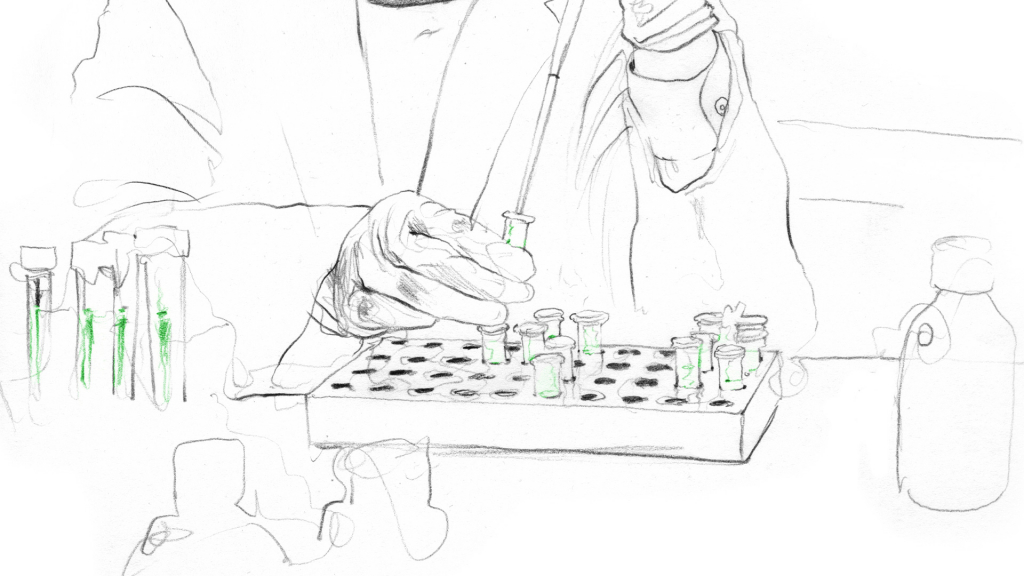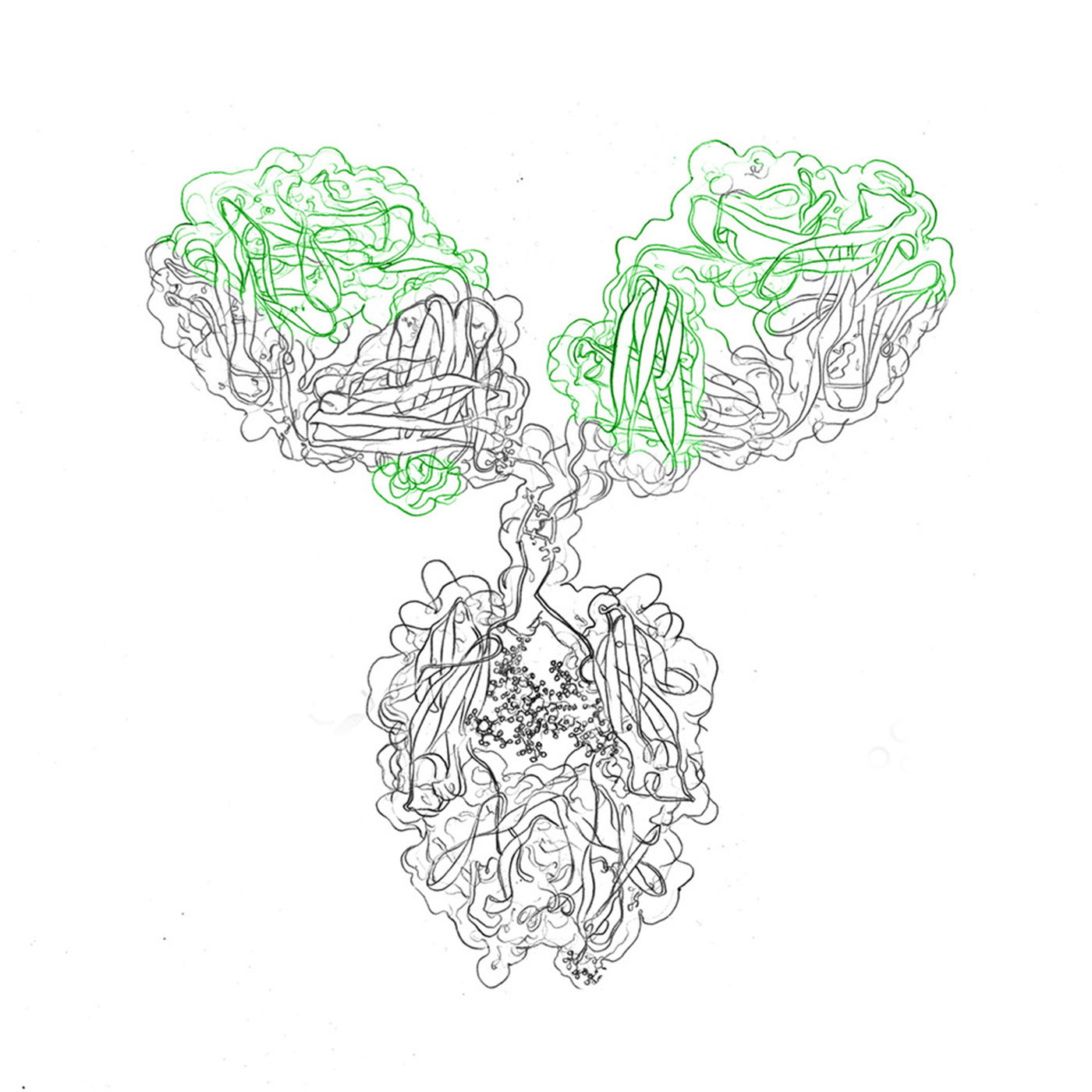Recombinant monoclonal antibody production
We are a leading service provider for recombinant antibody production. Get in contact!
First isolated by Frank Graham in the 1970s, human embryonic kidney 293 (HEK-293) is the second most employed cell line used to produce biopharmaceuticals and for academic research. The high transfection efficiency achievable is just one unique characteristic that makes HEK293 cells an ideal platform for expressing recombinant proteins.
The ease of transfection is also crucial for viral vector production in Chimeric Antigen T-cell therapy and other gene therapy applications. During the COVID-19 pandemic, HEK293 cells were used to produce one of the three adenoviral vector vaccines approved for emergency use by the World Health Organization (WHO).
In this article, we delve into the history of HEK293 cells and discuss the unique characteristics of the cells that make them ideal for both fundamental and industrial research. We also explore the role of HEK293 cells along with the widely used CHO cell line in recombinant antibody manufacturing.
The story of HEK293 cells starts with the work of Dr. Alex van der Eb and Dr. Frank Graham in the 1970s. Seeking to develop an understanding of how adenovirus causes cancer, they launched a series of experiments that involved transforming primary human embryonic kidney cells with sheared human adenovirus type 5 containing nucleotides 1-4344 comprising of the early region 1 (E1) transforming sequences.
Subscribe to our Newsletter
Get all the latest updates, and learn about our advancements in antibody production.
Subscribe now
Due to interference with the cell cycle and prevention of apoptosis, integration of the E1 sequences into chromosome 191 resulted in the transformation of cells, enabling the growth of an immortal, adenovirus-transformed human cell line.
The name “HEK293” resulted from the 293rd experiment in the series conducted by Dr van der Eb and Dr Graham1. Due to the presence of the early region 1 (E1), 293 cells have been used to produce E1A-deleted Adenovirus vectors, which have now been approved by the FDA for virus production for medical applications.
HEK293 cells require typical cell culture conditions, including a humidified incubator at 37°C supplemented with 5% CO2. The cells exhibit an epithelial-like morphology, appearing as adherent cells that naturally form monolayer, adherent cultures. They typically display a flattened, elongated shape with defined cellular boundaries, allowing easy identification and observation under a microscope.
HEK293 cells are inefficient at metabolizing glucose, and so require a media containing a high glucose concentration. The media should provide all the essential amino acids, vitamins, and inorganic salts in addition to a carbon source, and the media should be replaced every 2 to 3 days. Suspension HEK293 cell lines also exist and, like adherent counterparts, can be grown in animal supplementation at a final concentration of 10-20%.
An alternative to animal sera supplementation is a serum-free medium (SFM) or chemically defined (CD) media. SFM or CD media can have various advantages, including easier purification, less batch-to-batch variation in downstream processing, and better control of physiological cellular responses. Adaption to SFM is possible for both adherent and suspension growth, which can achieve high cell-density culture.
Introducing genetic material — vectors or plasmids containing the desired genes or genetic elements for expression — through transfection is a straightforward process. Cells can be transfected with calcium phosphate or polyethyleneimine (PEI), which are affordable transfection reagents that can be incorporated into stirred-tank bioreactors to rapidly produce recombinant proteins for research and preclinical use23. Other commercial transfection reagents achieve high transfection rates with HEK293 cells; however, they are more costly and more suitable to research applications.

The HEK293 lineage has several subvariants and derivatives (Table 1).
Adapted from4
HEK293 variant Derivation Characteristic HEK293 Transformation of human embryonic kidney cells with sheared fragments of adenovirus type 5 (Ad5) DNA, selected for immortalisation in 1973 Parental HEK293 cell line HEK293T Stable transfection of the HEK293 cell line with a plasmid encoding a temperature-sensitive mutant of the SV40 large T antigen Competent to replicate vectors containing the SV40 region of replication, increasing protein expression during transient transfection. Widely used for retroviral production. HEK293F Cloned from the HEK293 cells in 2014 and adapted to commercial medium High transfectivity combined with fast growth in a chemically defined medium.
HEK293 cells have a wide range of applications across various scientific fields. In biotechnology and biopharmaceutical applications, HEK293 cells are utilized to produce recombinant proteins, including antibodies and other vital proteins for therapeutic purposes. Gene therapy research benefits from HEK293 cells, as they aid in receptor signalling, study gene delivery systems, and optimize gene expression efficiency.
Examples of approved biologics produced with HEK293 cells,
Abecma® for CAR T therapy against multiple myeloma (Bristol-Myers Squibb)
Alprolix® Factor IX replacement against haemophilia B (Swedish Orphan Biovitrum /Sanofi)
HEK293 cells also contribute to advancements in protein expression studies, allowing for the production of proteins with high yields and proper folding. In virology, the cells are essential for studying viral replication, propagation, and the development of antiviral therapies.
Furthermore, HEK293 cells find applications in genome engineering studies based on CRISPR and other functional assays, enabling researchers to investigate gene function, signalling pathways, and protein interactions. Due to their high transfection efficiency and faithful translation and processing of proteins, HEK293 cells have been employed in thousands of studies involving heterologous expression of cell membrane receptors and ion channels and G protein-coupled receptors5.
Learn more about the different applications of cell culture!
Antibody production using HEK293 cells is a fundamental procedure in biotechnology and therapeutic research. It starts with the transfection of plasmids containing antibody genes into HEK293 cells. Gene expression results in the production of antibodies, which can be harvested from the cells or culture medium.
HEK293 cells come with a high transfection efficiency and are able to achieve high yields of recombinant antibodies. This mammalian expression system ensures post-translational modifications and proper protein folding, which are crucial factors for antibody functionality.
Antibody characterization and sequencing are essential to evaluating their specificity and activity. Thorough characterization ensures quality and reliability for diverse applications.
Due to their unique properties and versatility, HEK293 cells offer several advantages in scientific research. Nevertheless, one must consider the pros and cons of utilizing HEK cells to ensure informed decision-making.
Regarding antibody expression systems, HEK293 cells and CHO cells have established themselves as reliable platforms. Here, we have collected some major similarities and differences when comparing HEK293 vs. CHO cells.
We are a leading service provider for recombinant antibody production. Get in contact!

Researchers have relied on HEK cells for several decades due to their unprecedented capabilities. However, major developments in recombinant protein expression and in vitro gene expression have led to the promotion of CHO cells as an antibody expression platform. This cell line is both flexible and reliable when it comes to batch-to-batch consistency. Moreover, CHO cells are beneficial for both small and large-scale applications, which is why we at evitria rely on CHO cells for our recombinant antibody expression services.
Based on CHO cells, we are able to support partners worldwide with the rapid and reliable production of recombinant antibodies.
HEK cells are used in various scientific fields, including biotechnology, gene therapy, protein expression, and virology. They are valuable for producing recombinant proteins, including antibodies, and for studying cellular processes and gene regulation.